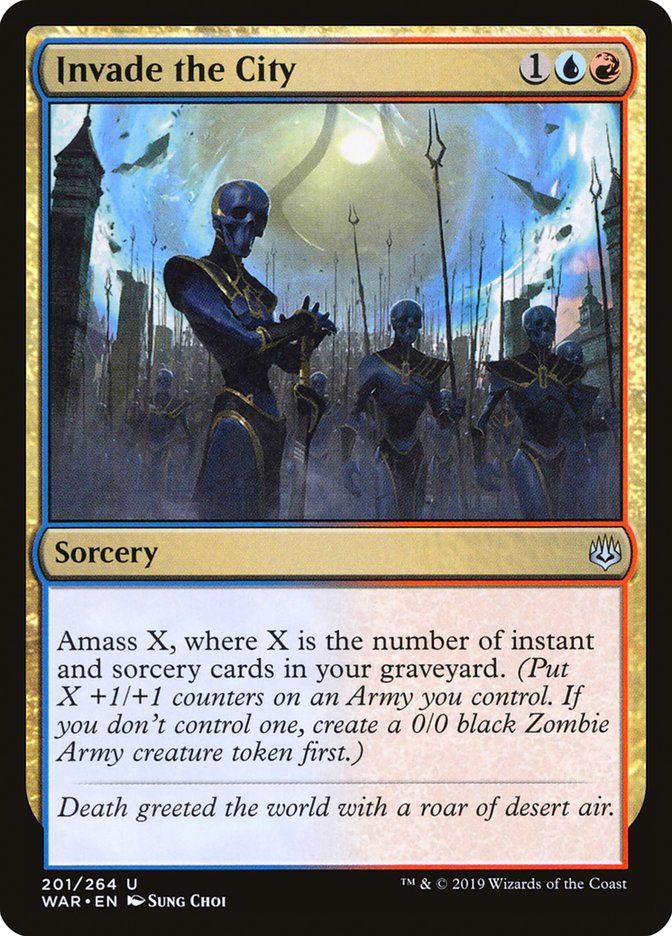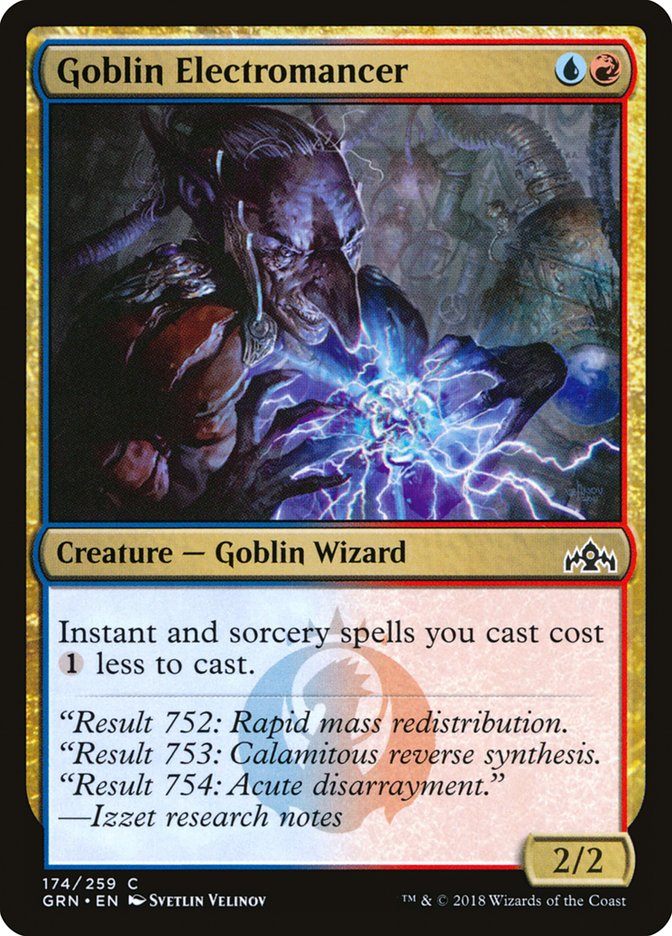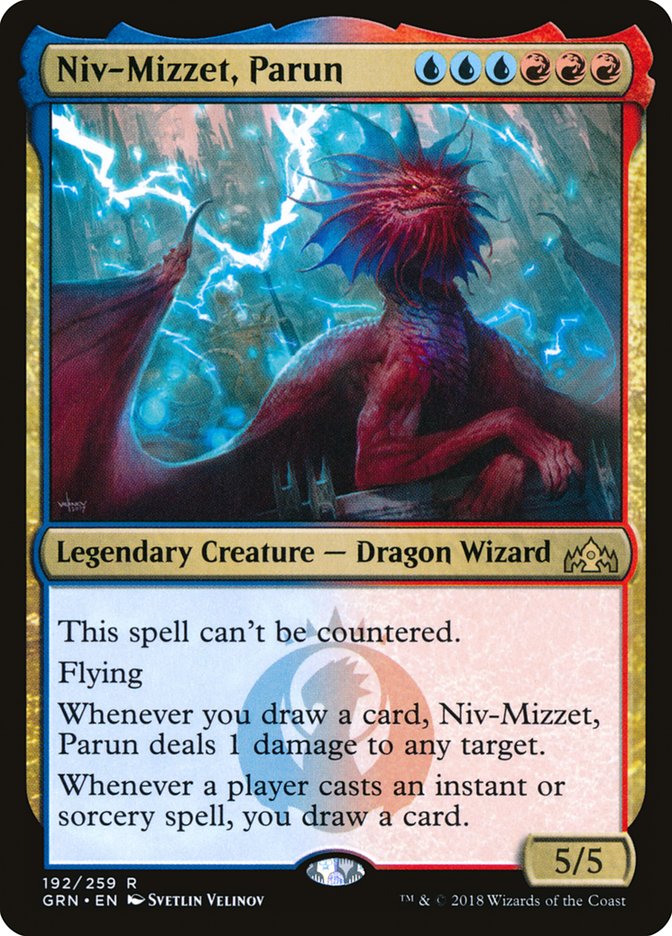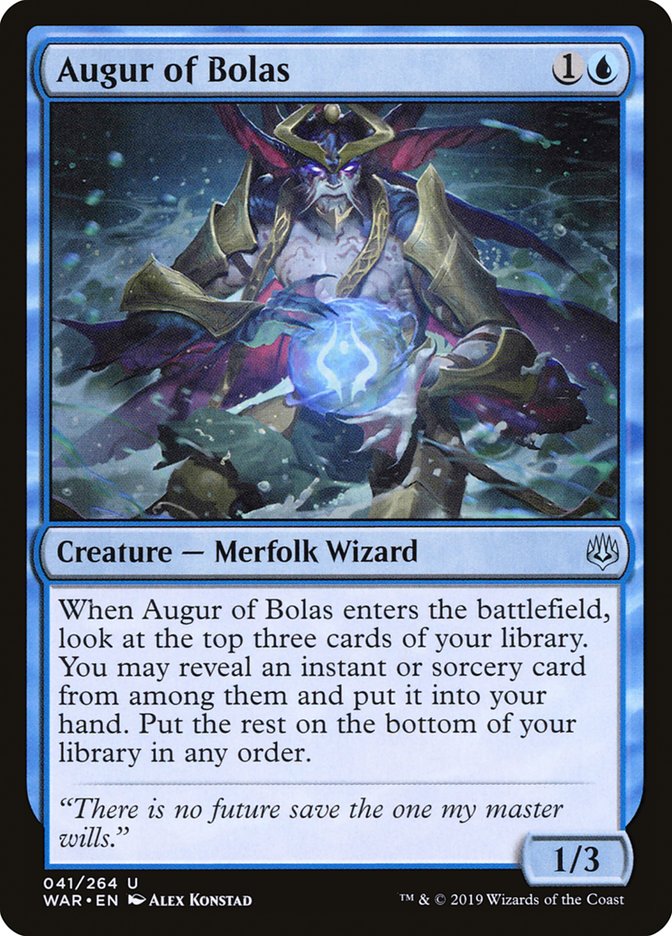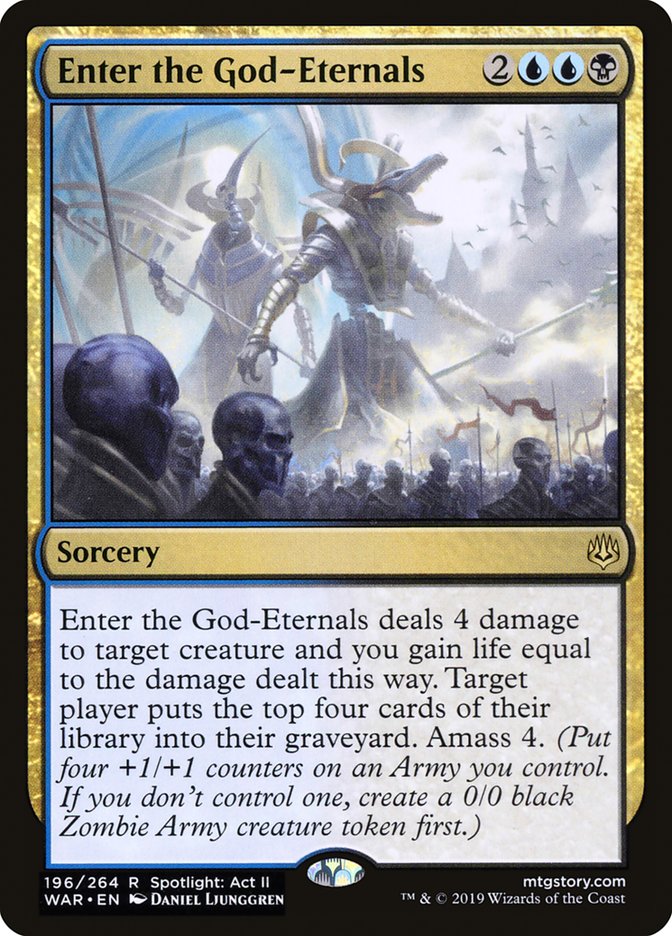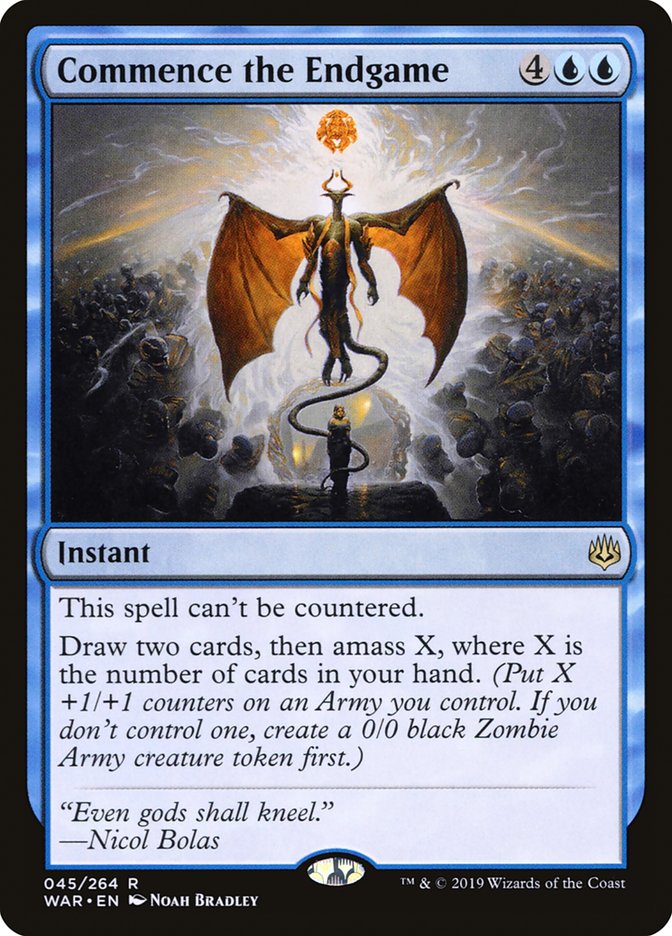Since the release of Guilds of Ravnica, it’s been obvious what Izzet is supposed to be doing. Izzet is the mad scientist guild and is all about instants and sorceries. “Spells matter” is the recurring theme throughout the guild’s premier cards like Crackling Drake, Goblin Electromancer, and Niv-Mizzet, Parun. This has produced some pretty cool decks since Guilds of Ravnica dropped in October and the two decks below illustrate the current face of Izzet, as well as the strategies I’ve employed to stumble up the MTG: Arena Ladder for most of this fall and winter.
Creatures (12)
Planeswalkers (1)
Lands (21)
Spells (26)

Creatures (10)
Lands (21)
Spells (29)

These two strategies are similar enough that they’re often mistaken for one another, but they’re different enough that each deck will use Invade the City differently.
The core of both decks is the same, but they differ in a few key ways:
- Luis’s deck plays Arclight Phoenix and Goblin Electromancer. It plays four copies of Radical Idea and two copies of Tormenting Voice to help make casting multiple spells per turn a reality.
- Andrew’s deck plays almost like a Modern Infect deck. He plays multiple copies of Dive Down and Spell Pierce maindeck. He accompanies them with maindeck copies of Niv-Mizzet, Parun and a full eight Drakes.
The newer version of Izzet Drakes had adopted Pteramander with the release of Ravnica Allegiance. A popular strategy around the time of the new set’s release, this deck has since fallen off the map completely. Could Invade the City be the piece that reinvigorates this strategy?
- The inclusion of a three-mana spell that’s essentially a creature comes with a cost. Enigma Drake is probably the weakest link in current Izzet Drakes lists and is a spot where you could look to add some copies of Invade the City. If you swap four Drakes for four Invades, your deck won’t function the same. It’s not necessarily going to be objectively better or worse, but it will be different.
- Situational spells that protect your threats are much worse when your threat doesn’t have flying. Dive Down on your Drake in response to removal is usually a blowout, so it can be disappointing when they just chump block on the following turn.
- Maindecking Negate and Spell Pierce is something people are currently doing. More importantly, I think they’re correct in doing so and thus the pattern is likely to continue. Giant flying creatures do a great job of making situational counters bad topdecks.
The values of cards in Standard are so dependent on what other people are playing that it’s natural to see several situational upsides or benefits as well as the aforementioned drawbacks.
- Invade the City is fantastic with Search for Azcanta in Izzet Drakes. These two cards work well together in general, but this is especially true here. This high-velocity deck can easily transform a Search but previously had few, if any, threats that could be found off the activation. Transforming Search against a creature deck was still great, but the advantage of doing so against a deck like Esper Control was not nearly as pronounced as you would expect. Invade changes this and I expect this to be one of several decks that include both cards.
- Invade the City is a threat and a spell, so it makes your Crackling Drakes bigger while also impacting the battlefield. It triggers your Niv-Mizzets and fuels your Pteramanders while making racing situations better for you as well.
It’s pretty clear that Invade the City, a card that cares about spells, works well in the spell-heavy deck, but is this the best deck for the card? That remains to be seen, though I’m not even sure it’s the best Izzet deck for the card. Arclight Phoenix is the talk of the town in Modern, but I think Invade the City is just the thing to push the Standard iteration to a new level.
If you look at Luis’s Izzet Phoenix deck from Mythic Championship Cleveland, you can see that his maindeck is filled out by a couple of unique removal spells as one-ofs. These cards are great in games against creature decks but can be problematic against your worst matchups – Esper Control, Simic Nexus, and Temur Reclamation. All three of these decks make your removal dead and are the worst matchups for Izzet Phoenix, especially in Game 1.
In these matchups, being able to reliably recur Phoenixes is important. All too often you’ll be going through the process of drawing cards and you’ll draw a removal spell without a target and your attempt to chain spells will abruptly end. Esper heavily taxes your resources, so having a card that contributes to the spell count while also being a threat that scales well throughout the game is a great way to get back a few percentage points in the rough Game 1 matchup.
Goblin Electromancer also works well with Invade the City by making it only cost two mana, though it is important to note that one of the mana is red. This may seem silly to point out, but those of you who have played a lot of Izzet Phoenix will understand the strain that Electromancer puts on your manabase. Nearly all your cantrips cost one blue mana when you have the Goblin Wizard on the battlefield, with Tormenting Voice as the only exception to this, and that card often gets trimmed after sideboard. Because red mana is required for the casting of Goblin Electromancer, it’s important to play several sources of red mana because resolving one on Turn 2 is so powerful.
This tension arises when the red source is a Mountain and you start to count the ways to use that Mountain on Phoenix turns. This is exacerbated by the fact that your opponent won’t always have a creature on the battlefield to kill on your third turn. Further, Shock often gets trimmed after sideboarding, leaving you with even fewer red spells to cast. When you add it all up, that red mana often sits there awkwardly, and Invade the City is a proactive way to spend that mana that you can always cast.
The texture of your deck in post-sideboard games where you add counterspells and Niv-Mizzet, Parun also increases the need for this type of effect. When you sideboard in countermagic, it’s important that your deck contains several proactive cards so that you’re able to still return Phoenixes if necessary. Also, the stringent mana cost of Niv-Mizzet causes you to keep several red sources off cantrips in the early-game because you want to be able to cast the powerful creature as soon as possible. The consequence of this is that you’ll often have a couple of Mountains on the battlefield that don’t really cast anything.
The matchups where you add counters and Niv-Mizzet are the same matchups where you cut Shock and Lava Coil, so this isn’t just theoretical nonsense; it actually happens often, and Invade the City makes your deck so much smoother in these situations. Furthermore, these decks are relatively unlikely to have many creatures at all, much less ones that can block your Army token.
I won’t tell you that I think Invade the City is one of the best cards in War of the Spark, because it’s not – it’s a role-player for a couple of different archetypes. However, it’s pretty good at plugging several holes in the way your deck is constructed, and I think the minutiae of figuring stuff like this out can be more interesting than evaluating some super-pushed mythic rare.
Creatures (12)
Lands (21)
Spells (27)

The mana available to us in the War of the Spark Standard allows us to play three-color decks as well as one- or two-color decks. Everything we’ve discussed above has been regarding two-color decks, but several new blue and black cards use the amass ability, and Invade the City in combination with other amass cards in a removal-heavy Grixis deck is another idea that has potential. Gone would be the days of putting value creatures like Restoration Angel and Snapcaster Mage on the bottom with Augur of Bolas, as the amass mechanic lets you find a threat off the Augur.
The token you create isn’t the only function of these cards, either. Most of them are solid spells on rate and the token serves as a bonus. The shell for a deck like this would include copies of the following:
An early blocker that finds your best spells and lets you play lots of lands.
An incredibly pushed removal spell that can fill the graveyard to make Invade the City better. The 4/4 token it creates as a base is a fine threat in and of itself. Gerry Thompson covered this one last week and it’s a pretty ridiculous card.
A way to operate at instant speed and get ahead against other control decks. An end-step Commence the Endgame followed up by an Invade the City can make a huge, often lethal, token out of nowhere.
An efficient way to make a blocker in the mid-game. Creates a huge clock in the late-game. Also can serve as a Fireball effect if you already have a token on the battlefield that can attack.
Let’s add some cards that are already legal and end up with a rough list that I can leave you with this week.
Creatures (4)
Planeswalkers (2)
Lands (26)
Spells (28)

Amass really mitigates the downside of playing a bunch of expensive instants and sorceries, and I’m excited to brew some more with the mechanic and War of the Spark leading up to its debut at SCG Richmond in two weeks!


